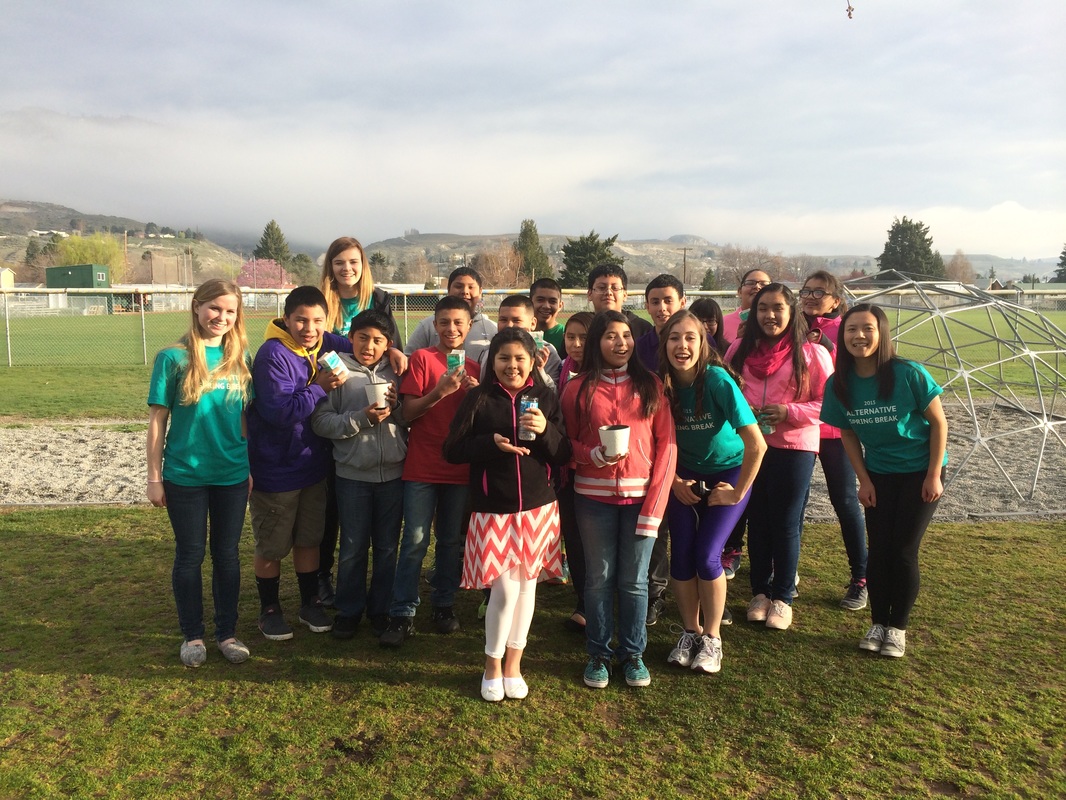
Photo courtesy of Meili Powell, Tali Haller, Dana Chapman, and Mikayla Richardson
Last spring, a group of UW students traveled more than 200 miles to help teach three sixth grade classes about the environment.
"Our overarching goal was to perpetuate love for the environment, but also teach kids how to affect change on the local level," said Tali Haller, one of the UW student teachers.
Since 2000, the UW Pipeline Project has sponsored Environmental Alternative Spring Break, a weeklong program that places undergraduates in rural and tribal communities throughout Washington State to teach elementary and middle school students about the importance of sustainability. This year, a total of 16 students participated. Students were divided into groups of four, each traveling to Castle Rock, La Push, Bridgeport, or Brewster.
Haller and three other UW students traveled to Brewster to teach an ecology-centered lesson at a local middle school. Each of the five school days was dedicated to a science-related topic, ranging from watershed biology and fish, to forest ecosystems and the reintroduction of wolves into the environment.
"We took the community’s assets into consideration and focused on real-world application," said Meili Powell, Environmental Spring Break coordinator and one of the UW student teachers. "We wanted the lessons to be as realistic as possible."
Brewster rests on the Columbia River, between the Chief Joseph and Azwell Dams. Residents use the dams, which usually have the highest concentration of fish in the area, to catch bass, salmon, and trout.
To demonstrate the harmful effects of overfishing, Haller had each student create a model of a watershed and "stock" them with candy fish. The students were then asked to catch fish from their self-created watersheds. Students had a tendency to catch as many fish as possible, which quickly depleted the fish stock and recreated the real-life problem of overfishing.
"We had students brainstorm ways of making fishing more sustainable and taught them about local fishing regulations, licenses, and catch limits," said Haller. "Ultimately, we stressed protecting the environment and its resources."
The sixth graders were encouraged to keep science journals to jot down important takeaways from each of the lessons. On the last day, the UW group came up with trivia questions to quiz students on what they had learned.
"The first day they were kind of shy," said Haller. "But, by the end of the week, they were all jumping up and down, raising their hands to answer questions. It was amazing to apply everything we learned at UW out in the real world."
About 2,370 people live in Brewster, and 73 percent of the population is Hispanic or Latino. A majority of kids in the town don’t expect to go to college, said Haller, who feels the UW students were also able to show the classes how rewarding college can be.
In addition to teaching during the day, the Environmental Alternative Spring Break group conducted college outreach at a local high school and visited the first Boys and Girls Club in Brewster.
"It’s amazing how we could build such a deep connection with a class and a group of students in such a short amount of time," said Powell. "On the car ride home, I got an email from one of the teachers saying how valuable us being there was. It gave her new ideas of how to deepen the way she presents environmental education to her students."